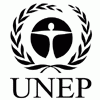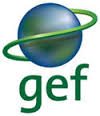Community / Land projects / Green Finance for Sustainable Landscapes Joint Initiative of the CPF (GF4SL)
Green Finance for Sustainable Landscapes Joint Initiative of the CPF (GF4SL)

€754088.3474
03/21 - 12/23
Completed
This project is part of
Implementing Organisations
Donors
Data Providers
Objectives
Boosting investor interest to increase capital flows towards forest restoration and deforestation-free agriculture.
Other
Note: Disbursement data provided is cumulative and covers disbursement made by the project Agency.
Target Groups
1. The benefits of this projects can be framed as follows: · First of all, through this project, a number of finance institutions are expected to make commitments to shift the way they finance clients in the forestry / agricultural sectors by not only focusing on ‘avoiding harm’ but by building in conditions that lead to positive social and environmental impacts by committing to finance deforestation-free and nature-positive soft commodity production and other forms of sustainable land use. · Secondly, the project strives to converge on a way to frame, measure and monitor impact related to the above by standardizing Key Performance Indicators, and by monitoring frameworks that are applied by impact investors, banks and institutional investors committed to shift capital towards sustainable land use. 2. By de-risking and availing more investment opportunities for SFM, SLM and sustainable agriculture, the GF4SL also aims at influencing national regulatory frameworks to facilitate a paradigm shift to internalizing environmental risks into longer-term agricultural and/or forestry strategies. The project will also impact local smallholders, as additional investment prospects also mean more chances to graduate from subsistence farming to more commercially oriented practices. By priming necessary loans to require SLM and sustainable agriculture methodologies, a ‘top-down’ paradigm shift can be accompanied by a ‘bottom-up’ approach. This will provide for additional livelihood and socio-economic opportunities and in turn positively influence the rural labor-market and reduce urban migration. 3. Additionally, nature-dependent households located near forest areas will benefit as they are usually relying on the collection of non-timber forest products to meet daily needs. As forests are degraded and these ecosystem services are negatively affected, household livelihoods are further reduced. Thus, the preservation and regeneration of sustainable landscapes has significant potential to also protect the most vulnerable and especially indigenous peoples who are even more dependent on natural resources on an everyday basis. 4. In addition to the above global strategies to yield substantive investment opportunities for deforestation-free commodities production under components 1 and 2 of the GF4SL, the project also will engage directly with producer associations, initiatives and smallholders at the local level though the global and regional learning hubs in component 3. Community-based forestry and agribusiness producer groups and enterprises are engaged/trained/empowered to better leverage their rights to forest resources and other natural resources to secure private investment in socially and environmentally sustainable projects. The project will thus increase the awareness of smallholders on the impacts of forest conversion and the often ensuing land degradation on the health of the communities living around the forest, e.g. through smoke and haze from clearing forest lands. This is aimed at supporting lasting change of behavior and decisions through improved risk assessment opportunities at local level when engaging in agricultural activities at the expense of the environment.




